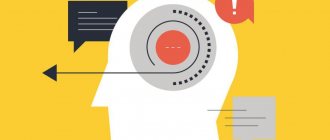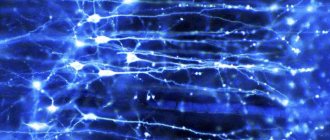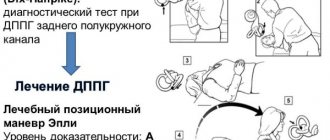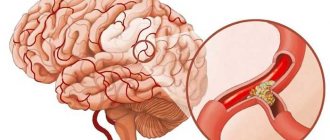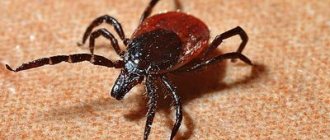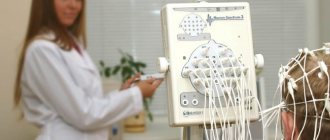What is coordination?
The term coordination is derived from the Latin “coordinatio”, which translates as “mutual ordering”. The coordination process is the coordination of the body's muscles, aimed at the best execution of the task. As motor skills develop, coordination improves, and inertia of organs that are in constant or intermediate work is formed.
When a person is constantly in motion, systematically repeats certain movements and exercises, complicates the loads, learns something new, then motor skills are improved and the motor centers of the brain are involved, and a stable connection is established between the brain and organs. Coordination in physical education is the ability to correlate one’s own actions, organize and coordinate them.
The brain sends impulses through a network of nerves, and organs, under their influence, perform certain movements.
Not every person has such agreement. Some adults and young children sometimes move awkwardly, gesticulate awkwardly, their gait is unattractive, they are unsteady on the ground, and they have problems with the vestibular system. Therefore, it is necessary to work on coordination systematically. To do this, in addition to sports training, it will be useful to improve the individual emotional background and practice attention.
Effective activities for developing coordination
There are many training methods for coordination and development of the vestibular apparatus.
To get started, just a few simple exercises are enough:
- The right hand makes the motion of the saw, that is, “back and forth,” and the left hand makes the movement of the ax, which means “up and down.” At some point, it is necessary to change the order of movement: the second hand must perform the actions of the first, and the first, accordingly, the second.
- Hands raised up. The left one depicts a circle forward, the right one depicts a circle backward. Then the limbs move in the opposite direction.
- You can test your coordination by doing a simple exercise: extend either hand with your palm open. Next, you need to press your little finger to your palm, while the other fingers should be in an unfolded state.
- It is required to make rotational movements with your hand to the left, and at the same time describe a circle with your foot in the opposite direction. Having arrived at a positive result, you should try to do the same with both hands and feet, sitting on some surface.
Age characteristics of coordination
The ability to coordinate one’s movements is directly dependent on a person’s age:
| Age (years) | Status of indicators |
| 5 | Unsatisfactory (except for children involved in sports and music). |
| 8 | Characterized by unstable speed and rhythm of motor activity. |
| 14 | The pace and clarity in the activity of all muscle groups is manifested in connection with the completion of the formation of the entire functional system of the body. |
| 15 | There is a slight decrease in activity. |
| 17 | Age of optimal development. The body is ready for productive work, training and acquiring skills. |
Over time, all movements are automatically harmonized and the muscles are coordinated with each other, functioning in a balanced and efficient manner. During physical education lessons, schoolchildren gain knowledge in athletics, gymnastics, participate in sports games and gain primary skills in working with sports equipment. Without good coordination, you cannot expect success in any exercise.
Therefore, the educational process is aimed at developing coordination of muscle work with the desires of students. The most favorable period for working on coordination is in the elementary grades. This is due to the peculiarity of the human psyche for the childhood period of development. A child is able to perceive and understand something only after seeing and performing a certain set of movements. This is the visually effective type of thinking characteristic of childhood.
Coordination abilities
The main indicators of coordination abilities are:
- speed of reactions;
- dexterity;
- equilibrium;
- orientation in space.
For proper training of the vestibular apparatus, classes that include elements of acrobatics and gymnastics are of great importance. During these exercises, it is necessary to increase the load and speed of exercises gradually. Exercises should be varied, and the pace should be increased over time. In this type of activity, spatial orientation develops easily, because in this case both visual sensations and muscle activity are involved.
Such exercises are carried out together with explanations and instructions from the teacher. The movement of the arms and legs occurs: in turn, synchronously, sequentially. It is easiest to coordinate movements when they are performed synchronously and in the same direction. It is more difficult to perform alternating exercises. The most difficult movements are in different directions and have different names. In exercises for legs and arms, you need to take into account the increase in difficulty.
In addition to everything, you need to do exercises where the arms or legs, or the body, are worked separately, and then add exercises that connect the movement of the body, arms and legs.
Something new is always required in coordinating and maintaining students’ interest in classes. When doing exercises, you need to use original starting positions, opposite movements, mirror actions, and changing rhythms. At first, when studying orientation in space, changing the position of body parts is carried out under visual control.
Then it is possible to clearly designate all possible directions of movement using words (relative to body parts). Coordination in physical education is also agility, which is the ability to quickly remake motor activity in a changing unexpected environment. In such activities, there are special requirements for the ability to concentrate and attention; sufficient reaction speed is required.
Coordination in physical education is a set of warm-up exercises.
Of the general exercises, the following workouts are most useful for agility:
- Quick change of position. For example, from a supine position, you need to sit down and straighten your legs, then bend your right leg at the knee, then your left; then stretch your legs again and lie down in the starting position.
- Requires coordinated action of three or more people. For example, transferring an object in a column.
- Game sports have an undoubted advantage in this regard.
The development of coordination skills and abilities also involves working on balance. It is more difficult the less space there is for support. Equilibrium always correlates with inertia from the previous movement, since subsequently there is an instantaneous transition to statics. For example, when performing a certain number of rotations, it is difficult to remain in balance, and even more difficult to remain motionless at the end.
Exercises that are useful for balance:
- Rotates 360 degrees in one direction and the other.
- Raising on your toes when your feet are placed together. Squats on your toes with a straight back are also effective.
- One leg is fixed in place and serves as a support, and the second is moved forward, to the side, and back. Perform the exercise one by one.
- Raising one leg, leaning on the other one. Then repeat with your eyes closed. In conclusion, you need to stay for 3-4 seconds. on one supporting leg.
Coordination of movements
Coordination of movements
given to a person so that he can perform precise movements and control them. If there is a lack of coordination, this indicates changes occurring in the central nervous system. Our central nervous system is a complex, interconnected formation of nerve cells located in the spinal cord and brain. When we want to make any movement, the brain sends a signal, and in response to it, the limbs, torso or other parts of the body begin to move. If the central nervous system does not work coherently, if deviations occur in it, the signal does not reach the target or is transmitted in a distorted form.
Basic indicator of coordination
You should understand what indicators measure coordination:
- movement accuracy;
- variety and complexity of movement;
- time;
- accuracy of response to an object in motion;
- rhythm;
- ability to maintain balance;
- ability for spatial orientation;
- rationality of action (expediency and economy);
- accuracy.
These indicators are practiced in physical education classes. However, the main and most comprehensive indicator in assessing coordination should be considered the ability to quickly rearrange the entire motor program. To analyze individual coordination abilities, it is necessary to observe a person for 2-3 years.
It is possible to predict the prognosis for the development of coordination in the future from childhood. A favorable time for predicting the development of coordination in the category “bodily agility” (gymnastics) is 6-7 years. Category “subject dexterity” (sports games) 11-12 years old.
Determination of human coordination abilities[edit | edit code]
Source:
Textbook for Universities “Sports Physiology”. Author
: I.I.
Zemtsova Ed.
: Olympic literature, 2010.
Today, the volume of activities carried out in various situations and requiring the manifestation of resourcefulness, speed of reaction, the ability to concentrate and switch attention, spatial, temporal, dynamic accuracy of movements and their biomechanical rationality has increased significantly. All these skills are associated with the concept of dexterity - a person’s ability to quickly, efficiently, expediently, that is, most rationally, learn new motor actions, successfully solve motor problems in changing conditions. Of greatest importance are highly developed muscle sensation and the plasticity of nervous processes, the degree of manifestation of which determines the urgency of the formation of coordination connections and the speed of transition from one set of attitudes and reactions to another. The basis of agility is coordination ability (Viksne, 1989; Dubrovsky, 2005; Kurochenko, 2005; Omelchenko, 2004; Fomin, Vavilov, 1991).
By motor-coordination ability we mean the ability to quickly, accurately, purposefully, economically, that is, solve motor problems (especially complex and unexpected ones) most perfectly.
The manifestation of coordination abilities depends on a number of factors, namely: a person’s ability to accurately analyze movements; activity of analyzers, especially motor ones; complexity of the motor task; level of development of other physical capabilities (speed capabilities, dynamic strength, flexibility, etc.); courage and determination; age; general preparedness (that is, a stock of diverse, mainly variable motor skills and abilities).
Coordination abilities to a certain extent can be divided into three groups:
1 group
- the ability to accurately measure and regulate spatial, temporal and dynamic parameters of movements;
2nd group
— ability to maintain static (posture) and dynamic balance;
3 group
- the ability to perform motor actions without unnecessary muscle tension (stiffness).
Coordination abilities belonging to the first group depend, first of all, on the sensation of space, as well as muscle, that is, the sensation of effort.
Coordination abilities, belonging to the second group, depend on the ability to maintain a stable body position, that is, balance, in static positions and when balancing during movements.
Coordination abilities, belonging to the third group, can be divided into the management of tonic and coordination tension. The first is characterized by excessive tension in the muscles that maintain the posture, and the second is manifested by stiffness and excessive muscle tension during movement, the inclusion of different muscle groups in the action, namely antagonist muscles, which negatively affects the action itself, incomplete transition of the muscles from the contraction phase to relaxation phase, which prevents the formation of perfect technique.
Coordination abilities are characterized by precise control of force, spatial and temporal parameters, are ensured by the complex interaction of central and peripheral motor units based on reverse afferentation, and have pronounced age-related characteristics.
Children 4-6 years old have a low level of coordination development and unstable coordination of symmetrical movements. Their motor skills are formed against the background of an excess of indicative, unnecessary motor reactions and a low ability to differentiate efforts. At 7-8 years of age, motor coordination is characterized by instability of speed parameters and rhythm. From 11 to 13-14 years, the accuracy of differentiation of muscle efforts increases, and the ability to reproduce a given tempo of movements improves. Adolescents 13-14 years old have a high ability to master complex motor coordination, which is due to the completion of the formation of a functional sensorimotor system, the achievement of the maximum level of interaction of all analyzer systems and the completion of the formation of the basic mechanisms of voluntary movements.
At 14-15 years of age, there is a slight decrease in spatial analysis and coordination of movements. At 16-17 years of age, motor coordination continues to improve to the level of adults, and the differentiation of muscle efforts reaches an optimal level.
Equipment
: stopwatch, whistle, balls.
Progress
- Performing a free throw (requires completion in the gym). The subjects are divided into pairs: one serves the ball, the other makes shots into the hoop 10 times in a row from the free throw line. Then the partners change roles. Every ball hit in the ring counts.
- Throw in motion. The subjects line up at the center line to the right of the shield. Everyone has a ball in their hand. At the teacher’s command, the subject performs two steps and a throw into the hoop with a rebound off the backboard. Then he returns to his place, makes a second throw, and so on (total -10). The number of accurate hits into the ring is recorded.
- Passing the ball with both hands from the chest (to the wall). The subjects are placed at a distance of 3 m from the wall and, at the teacher’s signal, perform passes (to the wall) with both hands from the chest for 30 seconds. The whistle ends the exercise. The task can be performed in two groups: one group of subjects performs passes, the second counts, then vice versa. The number of completed passes in 30 s is counted. Draw conclusions about the coordination abilities of the subjects.
Methods for developing coordination
Coordination in physical education is capabilities that represent readiness for optimal regulation of movement.
Methods for developing coordination include:
- variable exercise;
- a game;
- competition.
In physical education classes, game techniques are the most effective for working on coordination. The competitive spirit encourages you to exert great effort to achieve your goal. The most effective way is collective sports games. They help to develop the proportionality and clarity of the movements performed. During such activities, skills of rapid movements under changing circumstances are formed.
It is also important to conduct relay races, since they are organized within a certain time frame. Such activities using basketballs are especially effective.
Work on the vestibular apparatus is an extremely significant factor for overall development, as well as improving the ability to navigate in space. It provides a basis for learning new spatial movement skills.
The main methods for studying coordination abilities: testing and observation. Achievement in coordination is typically assessed using age- and health-related tests.
A set of coordination exercises
To train coordination, there are many exercises and entire complexes designed for training various groups.
The simplest complex for working with teenagers and groups of pensioners may be the following:
| A set of exercises to improve coordination abilities | |||
| № | Exercise | Dose | Recommendations |
| 1 | Ball toss | 5-6 min. | — |
| 2 | A few steps, somersault forward | 4 times | — |
| 3 | Throwing a ball at a target | 15 times | Each time increase the distance to the designated goal. |
| 4 | Jumping with a turn | 3 min. | 180° or 360° |
Types of coordination
The motor coordination required to complete a task is a combination of three skills:
- Fine motor skills
- Requires coordinated movement of small muscles (face, hands).
- Examples: writing, drawing, buttoning and unbuttoning.
- Gross Motor Skills
- Requires coordinated movement of large muscles or muscle groups (torso, limbs).
- Examples: walking, running.
- Hand-eye coordination skills
- The ability of the visual system to coordinate received visual information and then control or guide the hands to complete a task.
- Examples: catching a ball, sewing, using a computer mouse.
Types of coordination
Coordination is an innate ability. It, like everyone else, needs to be developed and improved. It synchronizes movements; with poorly developed coordination, it will be difficult to lead a normal life. It should be noted that this human ability deteriorates more than others when aging.
Without coordination, muscle movement is impossible. It is developed in almost every sport. Innate natural ability can be improved at every age.
Coordination happens:
- Intermuscular: the relationship of the muscles involved in the movement (intensity and order of muscle contractions).
- Intramuscular: muscles and their nerve impulses.
Factors influencing coordination of movements
Motor functions require many qualities that are acquired through training. By doing the exercises day after day, a level of skill is achieved, speed and strength increase.
Factors on which coordination depends:
- adequate motion analysis;
- difficulty in motor exercises;
- level of other physical capabilities;
- bravery;
- age;
- general preparedness and more.
Coordination also includes a sense of time, a perception of space where there is rhythm and a certain tempo that can change. It is based, in turn, on the ability to maintain attention, focus, and concentrate. Developed coordination requires intelligence, resourcefulness, and composure.
Recommendations for developing coordination
Development of coordination is carried out in the following directions:
- Performing different exercises, where there is a novelty in their reproduction from lesson to lesson.
- Increasing the complexity of assigned tasks, working on accuracy.
- Development of balance.
- Vestibular function training.
Methodological recommendations: quick change of positions (stand up, sit down); originality and unexpectedness of the position (running from a sitting position); change in speed with change in sequence order; using objects of different weights and volumes in training.
Practical tips:
- When working with young children, you should start with static exercises that simultaneously develop spatial orientation, balance and visual assessment of your own actions.
- A systematic approach to the frequency of training, since with long breaks there is a decrease in motor activity.
- When organizing classes, diversify the set of exercises and games as much as possible.
- Creating the most friendly environment in the group.
Coordination Development Tools
The main means of training coordination are novelty and difficulty of execution. Difficulty increases by, for example, reducing time, increasing distances, making objects heavier, and so on. Coordination activities cease to be effective when their implementation becomes automatic. Then their value disappears, as each, studied in full and done under the same conditions, does not contribute to development.
In addition, other motor skills besides coordination need to be worked on. The coordination ability of an individual plays a significant role in regulating movements. It promotes coordination and control of various motor activities depending on the assigned tasks.
A person needs to interact with the external environment, it is necessary to predict its possible transformations, to anticipate future events; and based on this, create your own model of action focused on achieving your goals.
Improving motor functions is the main goal of physical education. This task naturally implies the development of coordination in all its forms. First of all, training is necessary for children and older people. Work with other groups in this regard depends on the professional orientation of the latter.
For children 2-3 years old
For such young children, it is best to combine all activities with a walk on the playground; it will be much more interesting for him:
- normal walking (let him walk independently, coordinating the movements of his arms and legs);
- walking with an obstacle (step over curbs, sandboxes, etc.)
- bending and squatting (for example, behind toys);
- Increase the difficulty by walking on logs, benches, curbs, etc.
- conquering the vertical ladder.
Important! Be sure to be close to the baby so that you can pick him up at any time and thus protect him from unnecessary injuries.
